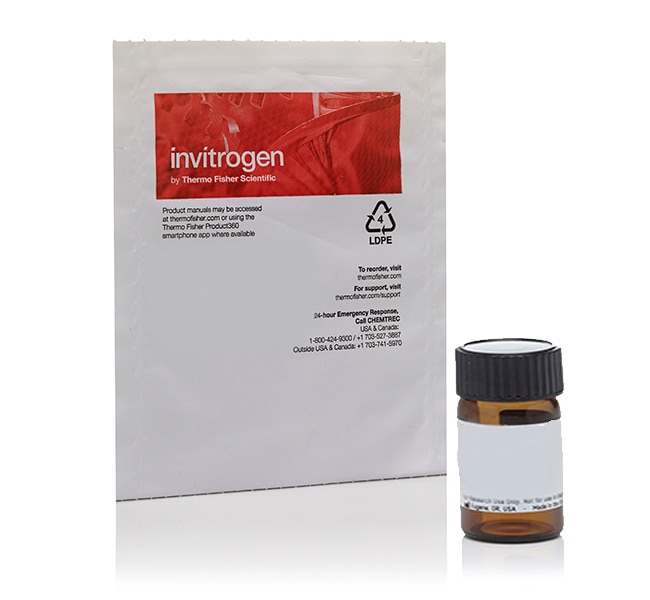Search Thermo Fisher Scientific

Zertifikate
SDB
Zitierungen und Referenzen (187)
Invitrogen™
Nilrot
Nilrot wird zur Lokalisierung und Quantifizierung von Lipiden verwendet, insbesondere von neutralen Lipidtröpfchen innerhalb von Zellen. Nilrot ist in WasserWeitere Informationen
 Sonderaktionen
SonderaktionenWerbeaktionscode:RIRP25
Save on Imaging Essentials to Create Your Next Masterpiece
14% off your purchase of $499 or more on Invitrogen cell stains and mounting products Weitere Informationen
| Katalognummer | Menge |
|---|---|
N1142 | 25 mg |
Katalognummer N1142
Preis (EUR)
285,65
Online Exclusive
306,00Ersparnis 20,35 (7%)
Each
Vorrätig
Menge:
25 mg
Preis (EUR)
285,65
Online Exclusive
306,00Ersparnis 20,35 (7%)
Each
Nilrot wird zur Lokalisierung und Quantifizierung von Lipiden verwendet, insbesondere von neutralen Lipidtröpfchen innerhalb von Zellen. Nilrot ist in Wasser und anderen polaren Lösungsmitteln fast nicht fluoreszierend, unterliegt jedoch einer Fluoreszenzverstärkung und großen Absorptions- und Emissions-Blauverschiebungen in unpolaren Umgebungen (∼552/636 nm Anregungs-/Emissionsmaximum in Methanol).
Nur für Forschungszwecke. Nicht zur Verwendung bei diagnostischen Verfahren.
Specifications
NachweisverfahrenFluoreszenz
Anregung/Emission552/636 nm
Zur Verwendung mit (Geräte)Fluoreszenzmikroskop
SummenformelC20H18N2O2.
Menge25 mg
Empfohlene LagerungBei Raumtemperatur lagern und vor Licht schützen.
VersandbedingungRaumtemperatur
Subzelluläre LokalisationZellmembranen & Lipide, Lysosome
FarbeRot
Physikalische FormFest
ProdukttypNilroter Farbstoff
Unit SizeEach
Have questions about this product? Ask our AI assisted search.
This is an AI-powered search and may not always get things right. You can help us make it better with a thumbs up or down on individual answers or by selecting the “Give feedback" button. Your search history and customer login information may be retained by Thermo Fisher and processed in accordance with our
Privacy Notice.
Abbildungen

Chemical Structure
Customers who viewed this item also viewed
Dokumente und Downloads
Zertifikate
Nach Chargennummer oder Teil-Chargennummer suchen
Chargen-Nr.Certificate TypeDateCatalog Number(s)
3192601Certificate of Analysis01. Juni 2025N1142
3148291Certificate of Analysis31. März 2025N1142
3135154Certificate of Analysis21. Jan. 2025N1142
3118575Certificate of Analysis04. Jan. 2025N1142
3023505Certificate of Analysis19. Aug. 2024N1142
5 Ergebnisse angezeigt, oben nach einem bestimmten Zertifikat suchen
Sicherheitsdatenblätter
SDB
Zitierungen und Referenzen (187)
Search citations by name, author, journal title or abstract text
Zitierungen und Referenzen
Abstract
Developmental shift in the relative percentages of lung fibroblast subsets: role of apoptosis postseptation.
Journal:The American journal of physiology
PubMed ID:10516228
Global metabolic profiling of infection by an oncogenic virus: KSHV induces and requires lipogenesis for survival of latent infection.
Journal:PLoS Pathog
PubMed ID:22916018
Like cancer cells, virally infected cells have dramatically altered metabolic requirements. We analyzed global metabolic changes induced by latent infection with an oncogenic virus, Kaposi's Sarcoma-associated herpesvirus (KSHV). KSHV is the etiologic agent of Kaposi's Sarcoma (KS), the most common tumor of AIDS patients. Approximately one-third of the nearly 200
Three-colour fluorescence immunohistochemistry reveals the diversity of cells staining for macrophage markers in murine spleen and liver.
Journal:J Immunol Methods
PubMed ID:18367204
'Macrophages have traditionally been identified in murine tissues using a small range of markers, typically F4/80, CD68 and CD11b. However many studies have suggested that substantial heterogeneity exists in macrophage populations, and no single marker, nor even pair of markers, can necessarily identify all the populations. Further, many of the
Lipid-dependent bidirectional traffic of apolipoprotein B in polarized enterocytes.
Journal:Mol Biol Cell
PubMed ID:14565984
'Enterocytes are highly polarized cells that transfer nutrients across the intestinal epithelium from the apical to the basolateral pole. Apolipoprotein B (apoB) is a secretory protein that plays a key role in the transepithelial transport of dietary fatty acids as triacylglycerol. The evaluation of the control of apoB traffic by
Functional analysis of FSP27 protein regions for lipid droplet localization, caspase-dependent apoptosis, and dimerization with CIDEA.
Journal:Am J Physiol Endocrinol Metab
PubMed ID:19843876
'The adipocyte-specific protein FSP27, also known as CIDEC, is one of three cell death-inducing DFF45-like effector (CIDE) proteins. The first known function for CIDEs was promotion of apoptosis upon ectopic expression in mammalian cells. Recent studies in endogenous settings demonstrated key roles for CIDEs in energy metabolism. FSP27 is a
187 total citations
